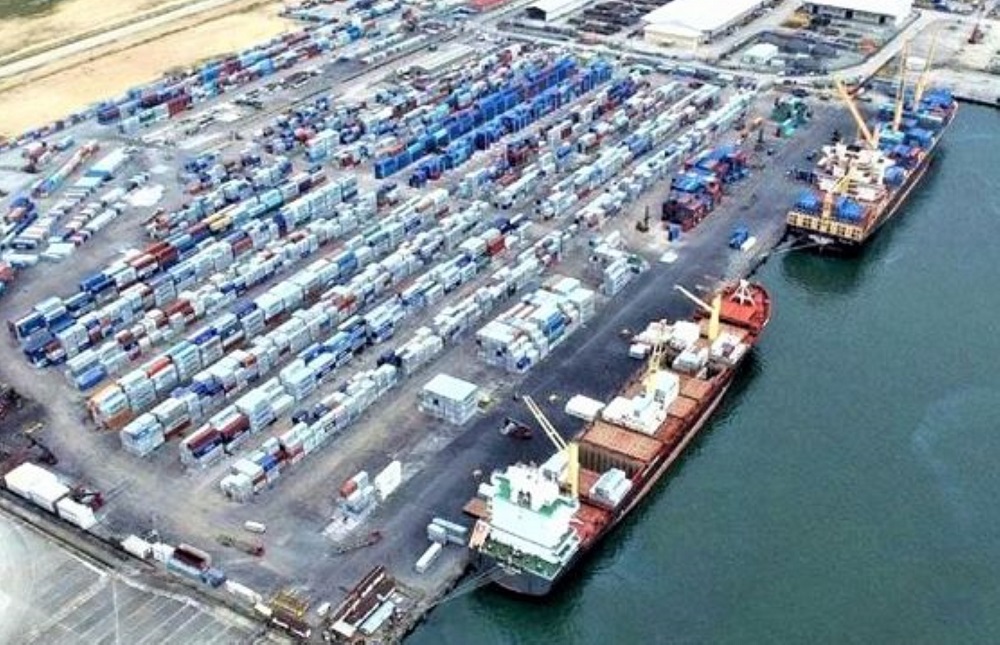How NPA may end Lagos port road gridlocks, drives traffic to Eastern ports
The ongoing efforts by the Federal Government to ensure that both rail and roads are connected to all the seaports in the country is geared at making the ports viable, efficient and to eliminate the seemingly chaotic gridlock witnessed along ports access roads in Apapa in Lagos state. Over the years, seaports across the country […]

The ongoing efforts by the Federal Government to ensure that both rail and roads are connected to all the seaports in the country is geared at making the ports viable, efficient and to eliminate the seemingly chaotic gridlock witnessed along ports access roads in Apapa in Lagos state.
Over the years, seaports across the country had suffered neglect, depriving Nigeria of the economic advantages of having efficient and well managed ports.
Apart from the Lagos ports, which accounts for over 80 per cent of cargo through-put to Nigeria, the Eastern ports which include, Onne in Port Harcourt, Calabar, and Ibom Deep Seaport at Ibaka, Akwa Ibom State, is strategically positioned to also drive traffic to the north to Carter for numerous inland dry ports and fuel depots.
The main problem with these ports is that the river channels leading to them are too narrow to accommodate large vessels. The shipping companies find it more convenient to take their vessels to Lagos than to the eastern ports.
The situation worsened after the concession of the ports started in 2006. This was sequel to the withdrawal of the 30 per cent incentive granted vessel owners to use the eastern ports when the Federal Government controlled the ports.
Apart from the Onne Port, most of the other ports servicing the Southeast, South-south and the Eastern flank of the north are virtually idle.
The channels into these ports need to be dredged, their facilities need to be upgraded and incentives provided to enable them take up more of the nation’s maritime business.
Apart from shallow channels, which make it impossible for bigger vessels to access the port, decrepit port infrastructure is another major problem.
While the Calabar Port suffers from shallow draught, the Onne Port is contending with insecurity such as pirate attacks and sea-robbery among others.
Other identified challenges include deplorable berths, dearth of finger mooring jetties to berth Nigerian Port Authority (NPA) crafts, lack of operational vehicles and fire hydrants at quays.
Cargo handling equipment and the port quays areas are also inadequate to make trade facilitation efficient.
Also, while high siltation at the Calabar Port has impeded safe navigation, the Port Harcourt Port suffered under constant pirate attacks, which made the port unattractive for foreign shipping lines. Because of the afore-mentioned challenges, no fewer than 754 vessels are said to have deserted the eastern ports between 2013 and 2016.
Specifically, the number of vessels that had berthed at the ports reduced from 2,268 vessels in 2013 to 1,514 in 2016.
According to the National Bureau of Statistics (NBS), the number of vessels that berthed at the Delta port fell from 609 in 2013 to 433 in 2016, while the Gross Registered Tonnage at the port also dropped from 8,687,160 (8.6 million) in 2013 to 6,177,809 (6.1m) in 2016.
However, in a bid to drive more traffic to the Eastern ports, the Managing Director of the Nigerian Ports Authority (NPA), Hadiza Bala Usman, between 2019 and 2020 commenced the dredging of Warri port at the cost of $44.861m (N16.150 billion).
The dredging which was completed in the first quarter of 2020 saw an increasing number of vessels calling at the port.
Customs broker based in Warri, Delta State and former National Financial Secretary of the Association of Nigeria Licensed Customs Agents (ANLCA), Val Orhobabhor, said he gathered that the dredging project has been completed.
Worried by the perennial gridlock in Apapa which had hitherto hindered commercial activities, the NPA management recently announced that it is working with professionals in the maritime sector to make the eastern ports attractive for business.
NPA deployed equipment worth over $30m in Onne Port, Rivers State. The measure, which was taken by the Managing Director of the NPA, Hadiza Bala-Usman was to boost efficiency, security and make the port attractive for business. Onne Port Complex is one of the key ports under the NPA. It is situated on the Bonny River Estuary along Ogu Creek.
Aside, six pilot cutters, tug boats and 17 metre offshore patrol boats, were deployed in the port to make the port attractive and stem the cycle of criminalities within and around the port.
It cost the NPA more than $30m to deploy the sophisticated equipment.
Apart from supporting exploration and production for economic activities, the free zone provides a logistic oil service centre for the oil and gas industry in Nigeria (Onshore and Offshore), while also providing easy access to the entire West African and sub-Sahara oil fields.
